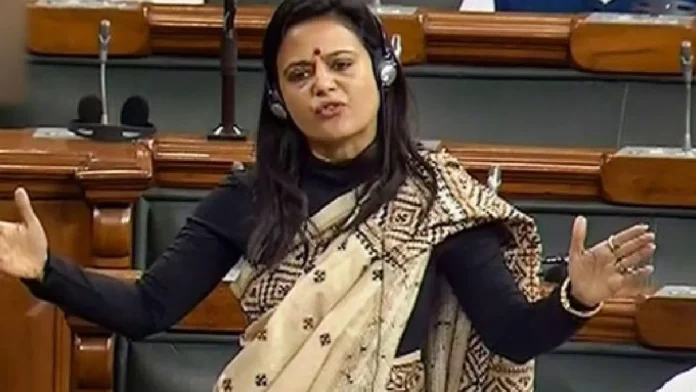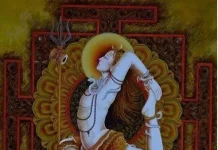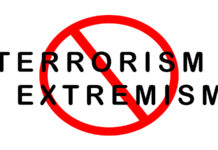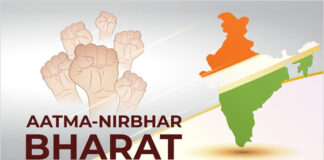Leena Manimekalai, a habitual offender against Hindu Dharma, speaks about Ma Kali being ‘originally non-Vedic goddess’, a totally non-original regurgitation of colonial myths and binaries. (The grapevine is that she purposefully created this controversy to get a foreign citizenship).
By Aravindan Neelakandan
The highly voluble Trinamool MP Mahua Moitra suddenly speaks about the ‘plural dimensions of the goddess worship’.
There will be soon a burst of characters who will start preaching about the ‘multi-dimensional, pluralistic nature’ of Hindu Dharma.
Now, what is the righteous and hence truthful way to approach this problem of hate propaganda against Hindu civilisation which uses the fig leaf of the immense freedom of pluralism inherent in Hindu Dharma?
It is a story every Indian child knows.
It was a bright day, and a majestic swan was flying across the clear sky of Kapilavastu. Devadutta of the royal family, cousin of crown prince Siddhartha, aimed his arrow at the bird, and the arrow found its mark.
The wounded swan, though not dead, fell to the ground. The graceful Siddhartha, ever filled with compassion, embraced the wounded swan. He removed the arrow and healed it with great care. In a few weeks, the swan was well and healthy.
Now Devadutta came and demanded that the swan be returned to him. After all, had it not been for his arrow, Siddhartha would not have found the swan.
Siddhartha realised what would happen if the swan was given to Devadatta. He refused and took extra care of the bird. The dispute finally went to the court of the king.
As the wise men of the court and the king contemplated over the situation, an old man appeared. The aura of righteousness around him was unmistakable and commanding. He declared that life does not belong to the one who has hurt it but to the one who rescued it from a near-painful death experience, healed its wounds and nursed it back to a rejuvenated life. Everyone agreed, and Indra, who came as an old man, disappeared.
So goes a tale in Buddhist tradition.
However, Siddhartha said that while the swan definitely did not belong to the one who intended to kill it, hurt it and injure it, it did not even belong to him who had cared for it and nursed it and protected it. He left the royal swan, Raja Hamsa, back into the vast expanse of blue sky.
What is true for that Hamsa is also true for Hindu Dharma.
Hindu Dharma was attacked repeatedly. It was hurt badly. It was wounded. Its temples were destroyed. Hindus were taken as prisoners. Hindus were tormented with extractive communal taxes to make them abandon their Dharma.
But great souls protected Dharma by removing the hurting arrow that had pierced the civilisation. From the songs of Kabir to the formation of Khalsa to the sword of Chhatrapati Shivaji Maharaj, the civilisational genius filled with compassion nursed back Hindu Dharma in all its plural expressions and saved it.
During colonial times and later, the charged arrow changed. But an arrow it remained.
The field of Indology and ‘scholarly’ understanding of Dharma were the new arrows in the quiver. From demeaning ‘deconstruction of Dharma’ through Freud and Marx to an outright depiction of Dharma as devilish falsehood, it was a concerted assault.
Hurt was Dharma, the heart of Rashtra Hamsa. Colonial Indology, missionary propaganda, anti-Hindu legislations of the British, Macaulay curriculum, Nehruvianism and Dravidianism, all formed the arrow that hurt the national being, bleeding it with pain. Day in and day out, Hindu Dharma gets abused by many of its own children.
Then emerged Sri Ramakrishna, Swami Vivekananda, Sri Aurobindo, Mahatma Gandhi, Veer Savarkar, Dr Hedgewar and Guruji Golwalkar. They and those who nursed the hurt soul of the nation. They faced the abuses, answered them, organised the society against all odds and thus healed the Dharmic heart of Rashtra Hamsa.
Now the Rashtra Hamsa has a vibrant Dharmic heart.
And the Devadutts are back.
So, when a Mahua Moitra says that Ma Kali was offered meat or liquor in some of our traditions, does she have the right to say it? Where was she when missionaries, colonialists, and Islamists attacked Kali worship lock, stock and barrel? Who opposed that? Who provided resistance? Who sacrificed their lives for the Mother?
When many juvenile perverts of Jawaharlal Nehru University, that necropolis of noxious Marxist ideas, used the outdated pseudo-scientific racist framework of the bygone colonial era to speak the unspeakable against Ma Kali, who was there to defend Ma Kali? Definitely not those who belong to the ideological dispensation of Mahua Moitra.
If you were not there when civilisational attacks were happening in the form of proselytising and racist perversion against Mother Kali, then what right do you have to talk about Kali Ma only at this point?
That is why Mahua Moitra should be opposed, and her arguments rejected. The same is true for Leena Manimekalai.












